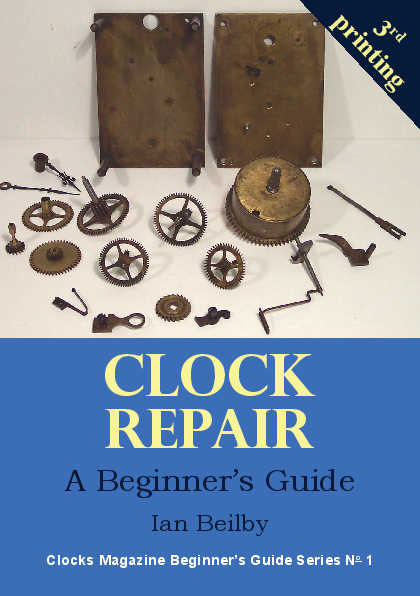
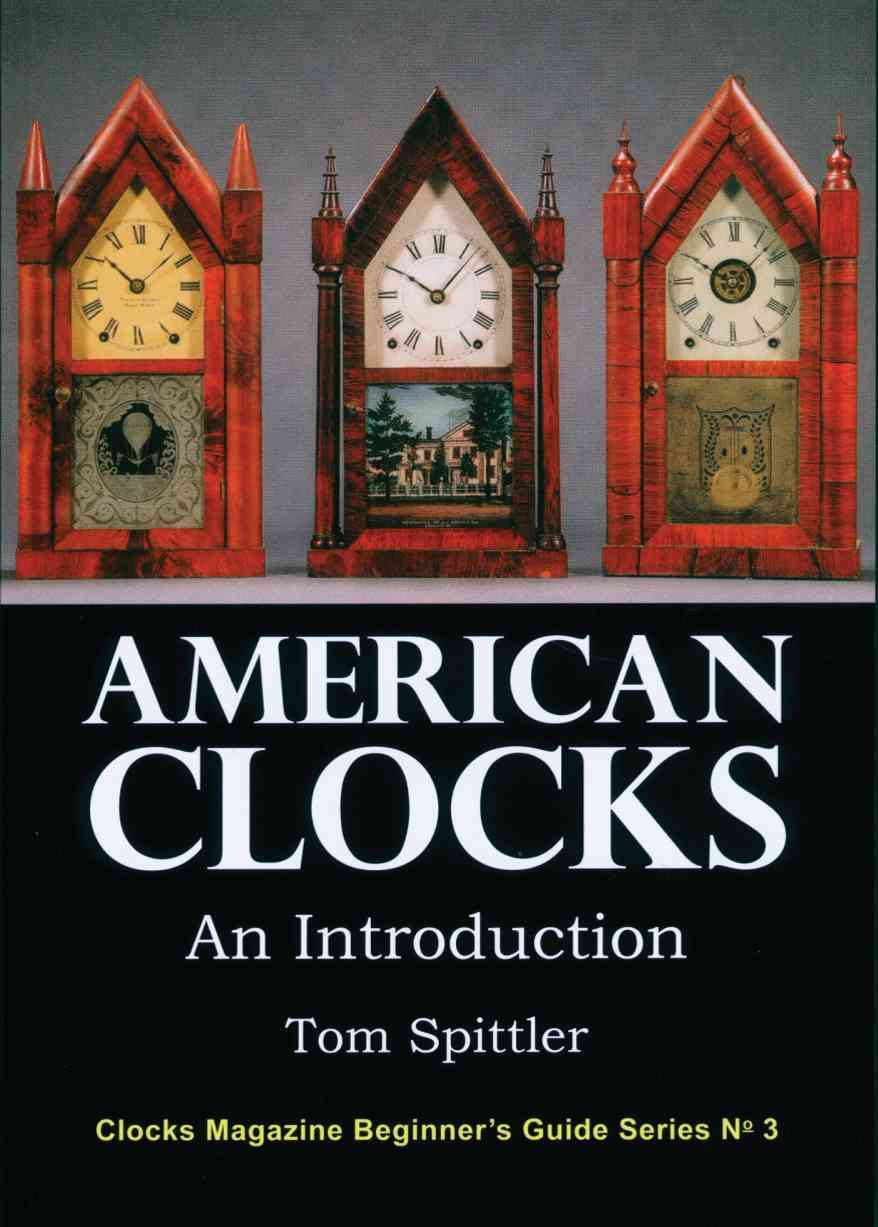

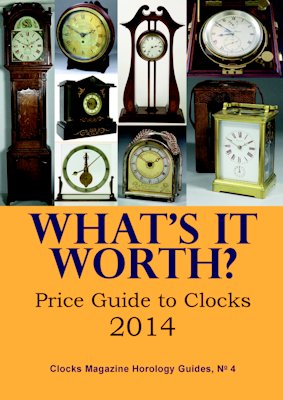
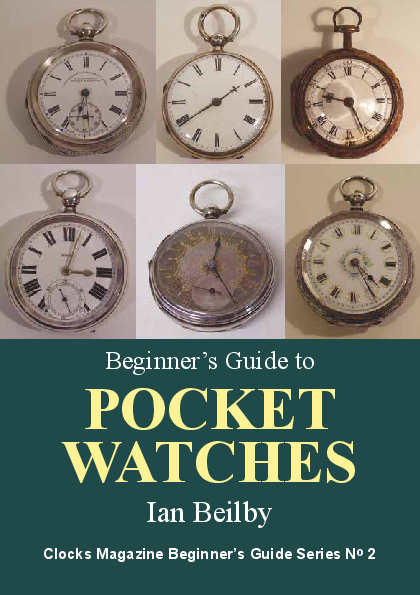
|
| from Clocks Magazine, Sepember 2004 |
The truth about Barlowby John Robey, UKDownload a pdf of this article One of the historical ‘facts’ that has been included in virtually every horological book that deals with this aspect of the subject is that the Reverend Edward Barlow, a Catholic priest from Lancashire, invented rack striking in 1676. But once you start looking at the evidence—and it is evidence that we need, not supposition—the claim (never made by Barlow himself) does not stack up. There is only one written source that links Barlow with his work on clocks (there is a bit more when it comes to watches) and it has been completely misinterpreted and the original quotation has been been trotted out without looking carefully at what it actually says. There has also been confusion between the systems applied to clocks and to watches and with some of the terms used. It should be made clear from the start that by rack striking we mean a curved sector with saw-shaped teeth that is advanced or ‘gathered’ one tooth at a time by a single pointed tooth on a rotating arbor—in effect a single-toothed pinion. The rack can fall freely, but is held by a hook when necessary. It is quite different to a geared sector and pinion (as used on some pull-repeat timepieces), which is often also called a rack, but should not be used in this context. A typical early 18th century rack-striking movement is shown in figure 1, and what we would really like to know is who invented this arrangement, or at least when it was first used. After detailed research a comprehensive article was published in Antiquarian Horology (March 2005, pp584-601) titled ‘Who Invented Rack Striking? The Early Development of Repeating and Rack Striking’. While the origins of rack striking are inextricably linked with pull-repeating, there are very few really early examples of rack striking, and none that can be positively dated. To determine when they were made one has to rely largely on the development of the style of their dials and cases. There are clocks that have some components that can be regarded as early combined with other parts that appear to be a later development, while other clocks have the opposite chronological order for these same parts. There are even a few weird and wonderful systems that, so far, have proved to be unique. Trying to give a clear, yet comprehensive, overview proved difficult, and I am the first to admit that with such a complex subject the main conclusion in my Antiquarian Horology article might have been missed. What I want to do here is to give as straightforward a view as possible, without overburdening this article with all the technical evidence. Those who want to know in detail how Tompion’s first systems work should refer to the article in Antiquarian Horology. Here I will start with what is known about the Rev Edward Barlow before looking at his role in the development of repeating work and how it relates to rack striking. Then a possible source of the idea will be discussed and how it was put into practice on the earliest known clocks with rack striking. Despite extensive enquiries, very little additional information about the life of Edward Barlow has been discovered other than what is generally known. One of the few snippets of extra information was his involvement in an early drainage scheme in Lancashire. He was born Edward Booth in 1639 at Warrington to a Catholic family, but changed his name to Barlow after his godfather Father Ambrose Barlow was martyred at Lancaster in 1641. Thereafter he was always known as Edward Barlow. There is no connection between him and any of the Barlow clockmakers working later in the 18th and 19th centuries at Oldham, Ashton-under-Lyne, Rochdale, Stockport and Manchester. In 1659, aged 20, he went to the English College at Lisbon, Portugal, where he was ordained as a priest in 1664. He returned to England in 1670 as chaplain to Lord Langdale near Beverley in East Yorkshire, but a couple of years later he moved to Park Hall, Charnock Richard, Lancashire, the home of the Hoghton or Houghton family. Park Hall is now a hotel and conference centre near the Camelot theme park alongside the M6 motorway near Chorley. Although he travelled about the country, including visiting Thomas Tompion in London, he was based at Park Hall until he died in 1719, in his 81st year. His visits to the capital must have been fraught with danger. In particular the year 1678 (only a couple of years after he is said to have invented repeating in clocks) was a dangerous time to be a Catholic in London, when the radical Puritan Titus Oakes, was spreading false rumours of Papist uprisings. As Barlow was a Catholic priest his collaboration with Tompion would have been conducted discreetly and he probably spent most of his time in the north, away from the religious and political strife of the capital. His meetings with Tompion (presumably in London) must have been conducted with what we call today a ‘low profile’, not only because of religious (and the implicit political) consequences, but because there were commercial advantages to be gained from these technical developments. In Lancashire the Rev Edward Barlow was regarded as a zealous Catholic missioner and a good friend to the poor in the neighbourhood of Park Hall. In 1684 he was appointed as the Rural Dean of the District of Leyland. He was learned in Latin, Greek and Hebrew, all of which he could read fluently at an early age. He became very accomplished in the mathematical sciences and was particularly interested in meteorology and the tides, and at an advanced age published books on the subject in 1714, 1715 and 1717, as well as theological works. Unfortunately for us he wrote nothing on horology, at least nothing that was published. One can only hope that one day his notebooks will be discovered in a dusty attic—a prospect that is as likely as finding Tompion’s work books listing all the clocks and watches he made. In 1697 Edward Barlow was one of three men who patented an engine for pumping water, which was used in an attempt to drain the Martin Mere near Ormskirk to convert large areas of wetland into arable land. In 1708 Nicholas Blundell of Little Cosby recorded in his journal: ‘called at Seath [Seth] Woodcocks and saw Mr Barlows water engine’. Despite the labours of over 2000 men this venture was not successful until nearly a century later, when the original sluices were widened and over 100 miles of new ditches were cut. Edward Barlow knew and worked with Thomas Tompion, as did Richard Townley of Townley Hall, near Burnley, and only about 25 miles from Park Hall. A number of notable 17th century Lancashire scientists met regularly at Townley Hall, but for some unaccountable reason Edward Barlow does not seem to have been a member of this so-called ‘Townley Group’. It seems inconceivable that the two men did not know each other, so why Barlow did not join in the scientific discussions at Townley Hall remains a mystery. But what of Edward Barlow’s horological interests and achievements? Most of what we know comes from The Artificial Clock-maker by William Derham, published in 1696. Here ‘Artificial’ doesn’t refer to its more usual modern meaning of being something that is not natural, but means made by human skill by an artisan. As the title page, figure 2, recounts, the book is primarily concerned with calculating wheel trains (including for astronomical clocks), pendulum lengths and the like. Although there is a chapter on ‘Quarters and Chimes’ this is mainly concerned with hammers and pinning of the barrel. There is nothing about the hourly strike or how the numbers of blows at the hours or quarters are counted. The conclusion has to be that a countwheel system was assumed, the method used since medieval times. However, there is a short three-page chapter on ‘The Invention of Repeating Clocks’, figure 3, which starts: The clocks I shall now speak of, are such as by pulling of a String, &c. do strike the Hour, Quarter, or Minute, at any time of the day and night. These Clocks are a late Invention of one Mr Barlow, of no longer standing than the latter end of K. Charles II. about the year 1676. This ingenious Contrivance (scarce so much as thought of before) soon took air, and being talked of among the London Artists, set their heads to work; who presently contrived several ways to effect such a performance. And hence arose the divers ways of Repeating work, which so early might be observed to be about the Town, every man almost practising, according to his own Invention. This Invention was practised chiefly, if not only, in larger Movements, till K. James II.’s reign: at which time it was transferred into Pocket-Clocks. William Derham is clearly talking about what we now call pull-repeating clocks and there is no mention anywhere in this book of the words ‘rack’ or ‘snail’. The first sentence with the words ‘by pulling of a String’ is so clear about this that it is difficult to understand how anyone could confuse it with normal striking on the hour. But this is just what has been done and Mr Barlow has been credited with the wrong invention since at least the early years of the 20th century. The distortion of Derham’s words appears to have been initiated by F W Britten in the third edition of Old Clocks and Their Makers published in 1911, and probably in earlier editions as well. ‘Edward Booth [Barlow] devoted considerable attention to horological instruments. He was undoubtedly the inventor of the rack repeating striking work for clocks, which was applied by Tompion about 1676.’ This statement would have been quite correct if he had not slipped in the word ‘rack’, thus completely changing the meaning. As a result Derham’s words been misquoted ever since. 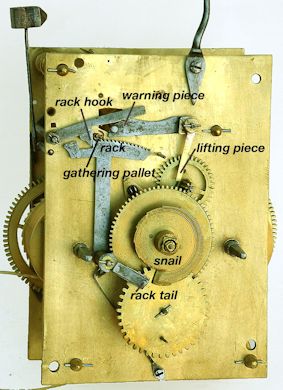

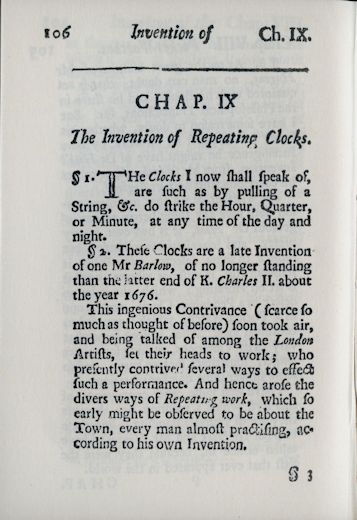
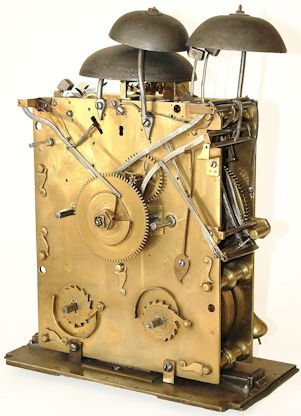
Britten also states that it was Tompion who applied Barlow’s ideas to an actual clock, but this is actually an assumption (although probably a correct one) and is not based on documentary evidence. He was also confusing repeating work for clocks with that for watches, which was developed about ten years later. The illogical reasoning appears to be that since rack-and-snail striking can repeat and Edward Barlow invented repeating, then he invented rack-and-snail striking. It is like saying that since carrots are vegetables then all vegetables are carrots. This contorted logic assumes that pull-repeating needs a rack and a snail, but there are several pull-repeat systems that only use a snail without a rack. So exactly what did Edward Barlow invent? It is known that he later collaborated with Thomas Tompion on a patent for a new type of watch escapement, so it is not unreasonable to think that Barlow’s repeating work was that used by Tompion on what is probably the earliest known pull-repeating clock. This is the bracket clock now known as the ‘Swansea Tompion’, figures 4 to 6, made about 1675, and formerly owned by the Vivian family who made a vast fortune from their copper smelting works near Swansea. This clock is now on display at Lyme Park (National Trust), near Stockport, in one of the finest and most important clock collections outside London. It has the unusual combination of a conventional countwheel for the normal hour striking and a separate pull-repeat system for the quarters and repeated hours. This is not the place to describe the intricacies of the movement; suffice to say that there is a double-six snail (to reduce the total number of blows and so conserve power) and a very complex lever system, but no gathered rack. This is the only clock known with this system, which probably proved too complicated and rather unreliable. Jeremy Evans, formerly a curator of horology at the British Museum and the authority on Thomas Tompion and his clocks, is of the opinion that Barlow’s main contribution was the snail and it was the earliest recorded use of a cam to provide precise movement of a lever. Ten years later Thomas Tompion made a repeating watch to a design by Edward Barlow and the latter tried to patent the invention. The petition was opposed by Daniel Quare who claimed to have also invented such a watch. While Quare’s needed only one push of a pendant to repeat both the hours and quarters the Barlow method required two pushes, one for the quarters and another for the hour. The petition was also opposed by the Clockmakers’ Company on the basis that Barlow was seeking a patent ‘for the sole making and manageing all pulling Clocks and Watches, usually called Repeating Clocks, the same being now made by severall Clockmakers’. Since by that date repeating clocks were being made by various clockmakers it is not surprising that no patent was issued to either Barlow or Quare. By trying to include repeating clocks, which were not new at that time, Edward Barlow ensured that his petition would be thrown out. If he had restricted the application to repeating watches he would have stood a much better chance of success. Having established that Barlow’s 1676 invention was for repeating work in clocks, who did invent the principle of rack-and-snail striking? The truth is that we do not really know, but there is a good case for the inspiration to have come from the fertile mind of the scientist Robert Hooke, with Thomas Tompion putting Hooke’s ideas into practice. It is well known that Hooke showered Tompion with ideas for improvements in various aspects of clocks and watches. There are some enigmatic entries in Hooke’s diaries which are not readily explainable, but can be interpreted as the basic idea behind rack striking. Of course the diaries do not say words to the effect: ‘I suggested to Mr Tompion that he made a curved rack with pointed teeth that is moved by a gathering pallet, is held by a rack hook and has a tail that falls on to a stepped snail’. If it was that simple Robert Hooke’s name would have gone down in horological history as the inventor of what we now call rack-and-snail striking. And that is the point. The idea was so new that there were no terms available for what we now call the rack, rack hook, rack tail, gathering pallet and snail. We do not know what any of the early clockmakers called these parts, nor when their present-day names were introduced. Even in the early 19th century the gathering pallet was called a ‘grappler’—a rather more descriptive term than the modern one. There are two entries in Hooke’s diary that are relevant and both were written at about or shortly after the date of Barlow’s repeating work: Friday 10th Nov. 1676. At Tompions, told him of my new striking clock to tell at any time howr and minute by sound. Sunday 24th June 1677. Tompion here instructed him about the King’s striking clock about bells and about the striking by the help of a spring instead of a pendulum, as also the ground and use of the fly and of the swash teeth. The first reference is clearly to a repeating clock, while the second reference to swash teeth is intriguing. In June 1674 Hooke had ‘Told Tompion the way of swash wheels’, which are wheels set at an angle to their arbors so that they wobble and can be used to convert rotation into reciprocating motion. Note that the swash teeth referred to in 1677 appear to be quite different to the swash wheels mentioned earlier. It is unlikely that Thomas Tompion would need instructions from anyone, even the great Robert Hooke, about the use of a fly in striking work. Also it is difficult to envisage how a swash wheel could be of practical use in a striking or repeating mechanism, unless it was to pump over an arbor with a hammer tail. Hooke is clearly talking about striking, rather than repeating, so is his ‘fly and of the swash teeth’ a prototype gathering pallet and rack with saw-shaped teeth? One of the definitions of ‘swash’ in the Oxford English Dictionary is ‘derived from aswash = aslant’, and refers to something that is slanting or sloping, which would apply to the saw-shaped teeth on a rack. And what is the ‘ground? This can mean to hold something firm, so might it be what we now know as the rack hook to hold the rack between each gather of the pallet? Hooke does not mention anything that might be interpreted as the snail, but as we have seen this had already been used on Tompion’s earliest repeating clock. 
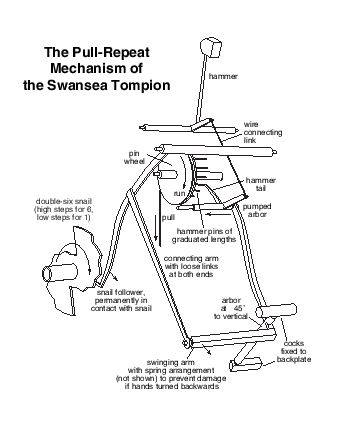
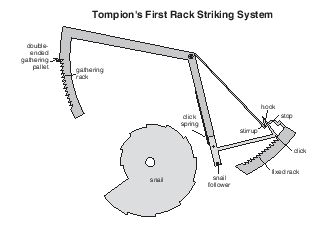
So Hooke might have been suggesting to Tompion the three additional components that need to be added to the snail to make the new form of striking work, ie the rack, rack hook and gathering pallet. Thomas Tompion put these ideas into practice in what are probably the earliest surviving clocks with rack-and-snail striking. However, they are exceedingly complex, with not only grande sonnerie striking using just two trains, but they also have repeating work. In addition there are numerous refinements to prevent miss-striking, miss-repeating and fail-safe devices to prevent damage if, for instance, the hands are turned backwards. There are five bracket clocks of this type, three of them known today as the ‘Sussex’, ‘Tulip’ and ‘Castlemaine’ Tompions together with the remains of two others, all thought to have been made about 1680. Figure 7 shows a simplified diagram of just the striking mechanism of these clocks to demonstrate the basic components. Here we can see the snail, two racks, the rack tail and the gathering pallet. There is no rack hook as we know it but a click acting on a separate rack just for holding. Once the moving rack has been gathered up a complex arrangement lets the click disengage from the fixed rack, allowing the mechanism to reset itself ready for the next strike. (Those interested in following the sequence of events should refer to the article in Antiquarian Horology.) Tompion’s system was much too complicated for general use and other London clockmakers such as Joseph Knibb produced simplified versions, initially with two separate racks (similar to Tompion’s) for holding and gathering. Others, probably later, used a single rack with two sets of teeth, one set on the outside for holding and another on the inside of the curve for gathering. Another London clockmaker, Henry Younge, who worked in the Strand, produced some very inventive ideas, including a rack tail in the form of a staircase and at least three clocks with a circular rack. Eventually the most practical parts of these variations were combined and simplified to produce an arrangement similar to that shown in figure 1. The most obvious simplification was to do away with the separate racks for holding and gathering. Who was the first to do so is still unknown. It certainly was not the Rev Edward Barlow, who should be credited with a form of repeating that probably did not employ a gathered rack. So, the answer to who invented rack striking in the form that was widely used in the 18th and 19th centuries is: no one person. Instead many different clockmakers tried various arrangements in an attempt to produce a simple and reliable system. Even when the basic layout of rack, rack hook, rack tail, snail and gathering pallet had been finalised there were still several different methods of letting off the strike, warning and locking the train. On that score pallet-tail locking eventually became the most popular, although deep-tooth locking persisted into the 19th century. But that is another matter and consideration of those issues only makes an already complex subject even more involved. To get a feel of what was happening in both London and Lancashire and what it was like to be a Catholic at a time of Popish plots in the 17th century, the historical novel Moon in Scorpio by Robert Neill, published in 1952, is recommended reading. It is the only novel that I know of that includes Thomas Tompion, while a major character in the book is the main character in this article: the Rev Edward Barlow. The Lancashire part of the story involves the Martin Mere, yet it was written at a time when Barlow’s involvement there had not been recognised. The author seems to have had remarkable foresight. But remember that it is only fiction and you will find as many references to rack striking in this novel as there are in The Artificial Clock-maker. To untangle what was going on in this branch of horology in the last quarter of the 17th century more examples need to be studied. The author would be very pleased to hear of any early clocks before about 1700 with rack striking (and any clocks by Henry Younge), so that a better picture will emerge of this important feature of early clocks. To summarise, the Rev Edward Barlow invented repeating, not rack striking. The incorrect attribution of rack striking to Barlow over the last century is due to a careless statement by Britten, which has been endlessly reiterated and miss-interpreted. Download a pdf of this article |
| © 1977 to 2015 Clocks Magazine & Splat Publishing Ltd |